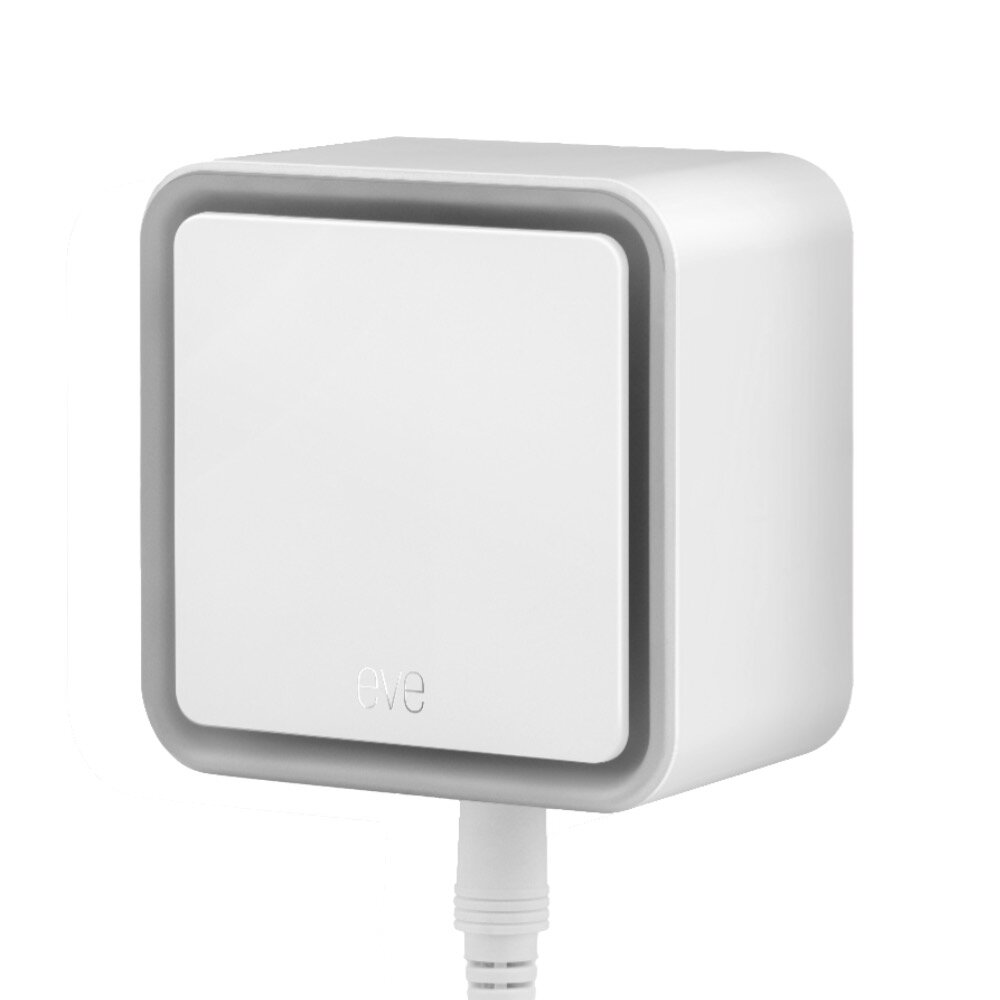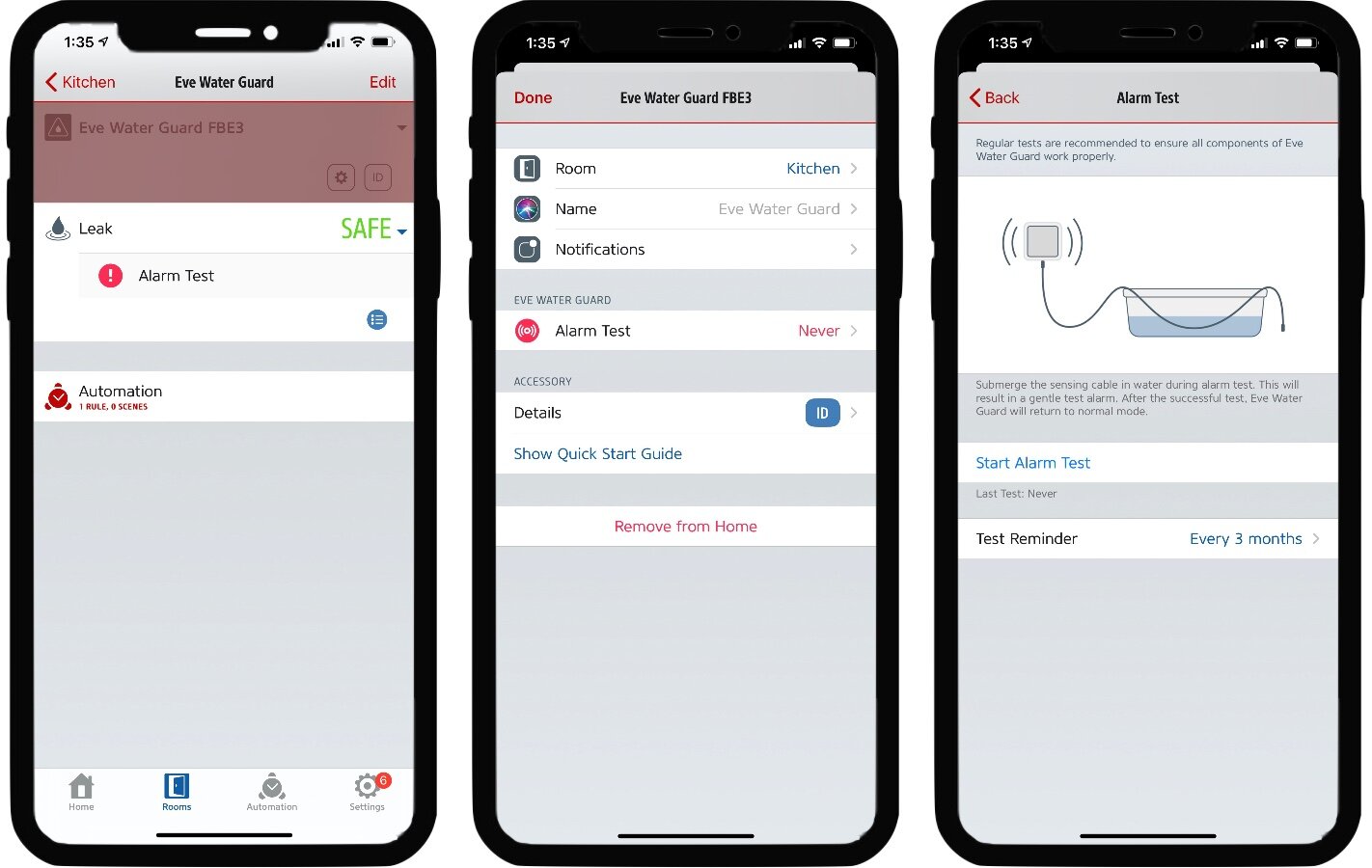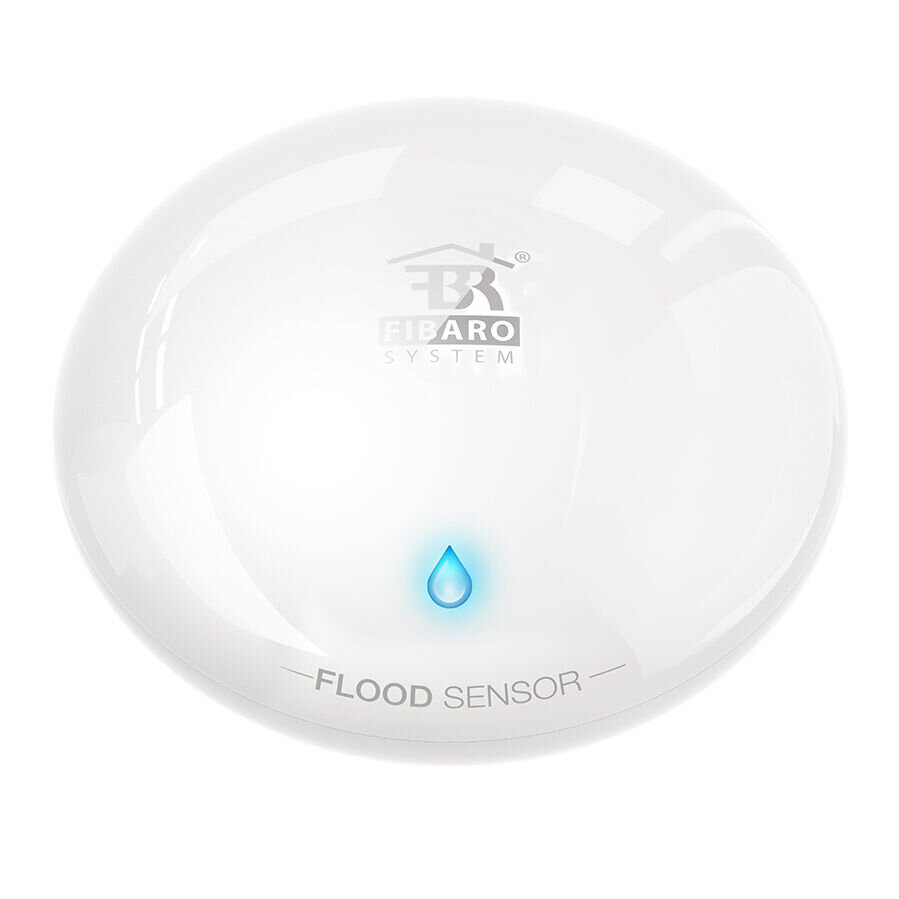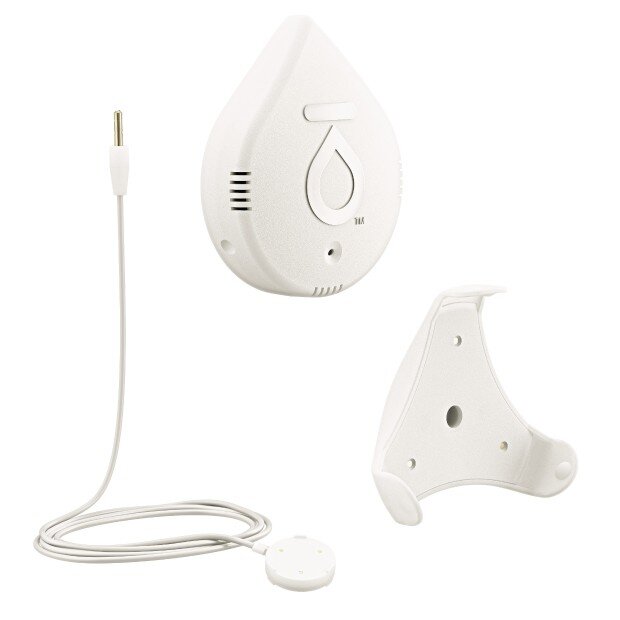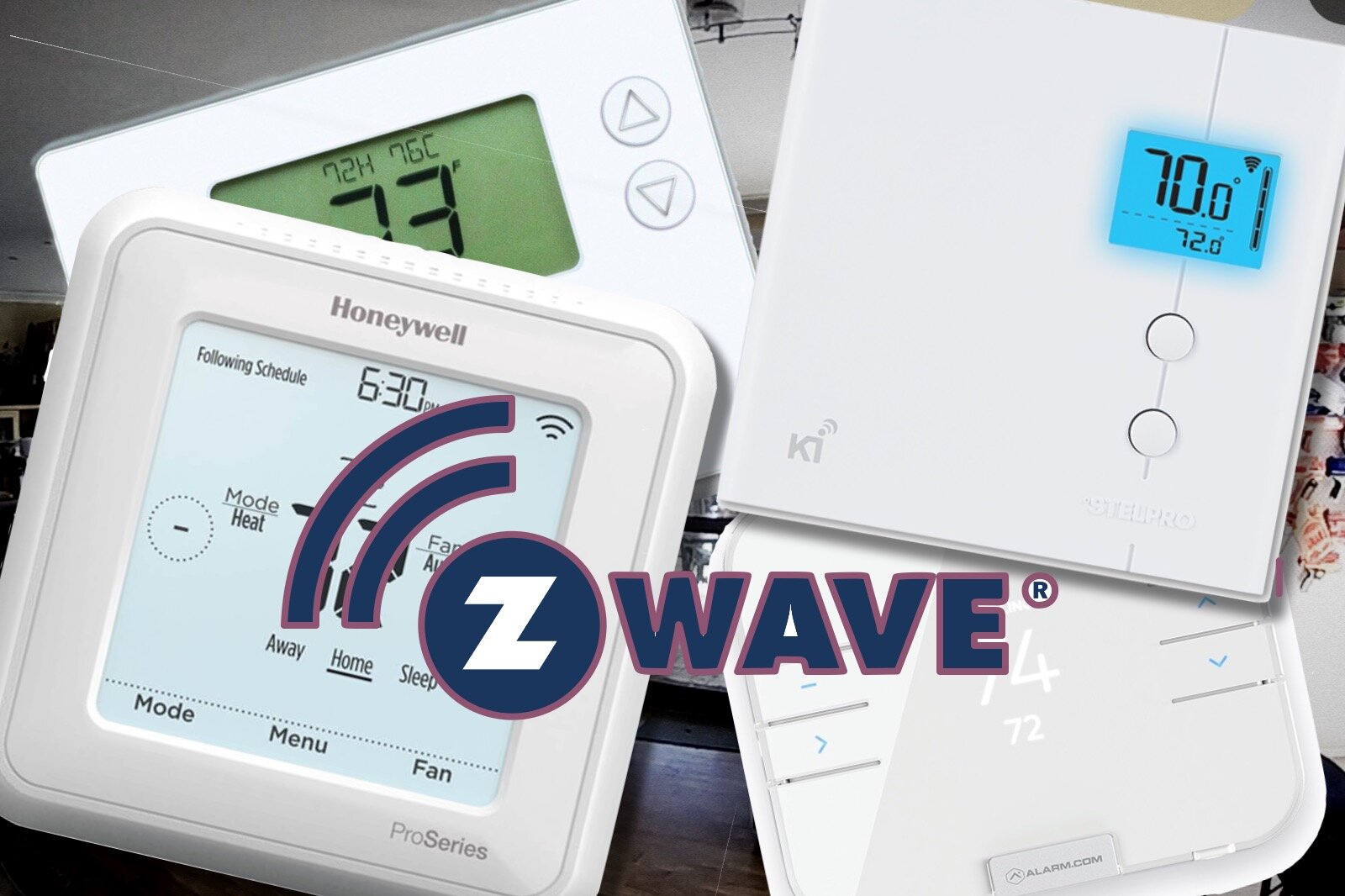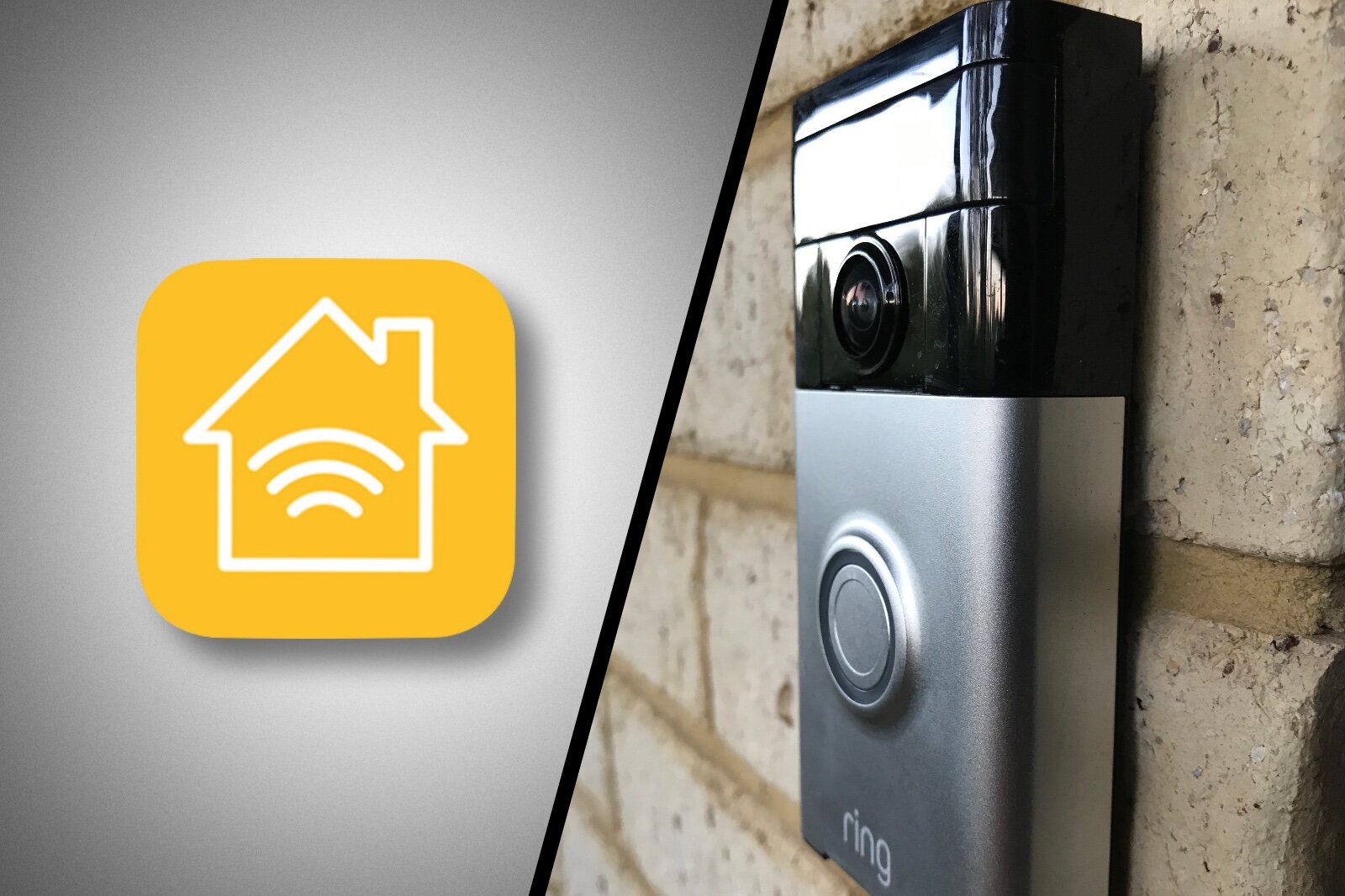Eve Water Guard: A versatile leak detector
When you buy through links in this article, I may earn an affiliate commission. Learn More.
While many smart homes start out with motion sensitive lighting and voice control as the basics, once you start to get into automation rules and the more diverse device options that can be added, you’ll start to realize the potential for smarter actions your home can take to help you out.
While most people think of security systems first when it comes to protecting their home, water damage is far more common than break-ins. Water damage affects 14,000 Americans per day, resulting in an average repair bill over $7000. Thankfully there are dedicated devices available to detect these before they become a major issue.
Smart leak detectors have been around for a while, but we’re starting to see more options for these in HomeKit as well. Eve Water Guard from HomeKit exclusive device maker Eve Systems is the latest addition to this category, and offers a different approach to most other leak detectors.
Up Front Considerations
Leak Detectors are essentially alarms. Their purpose is to urgently alert you to a leak so you can take action to prevent extensive damage. Eve Water Guard does this a few ways, but a key one is the use of an audible alarm. This is quite loud, so you should consider if that’s the kind of alerting you want as it’s not optional.
Many leak detectors are also battery powered, which is great for placing them right where you need. This does limit other capabilities though, like the alarm function and how much area they cover, and adds the need to change batteries regularly.
Eve Water Guard plugs into a normal power outlet, so you’ll need to factor in where the nearest outlet is. This is less of a problem than it sounds, though, because of the reach of the sensor cable it uses.
Being a HomeKit device, you’ll need a home hub set up in order to receive alerts when you’re away from home. In many cases this is a nice-to-have, but in this case, it’s pretty essential if you’re to get value out of having leak detection.
I’d strongly recommend a home hub for any automation and sensor capabilities in HomeKit anyway, particularly where they use Bluetooth connections as this one does.
What’s in the box?
Eve Water Guard box contents
One thing I like about Eve Systems is that, where possible, they target the global HomeKit market rather than specific regions. This means they tend to produce dual-voltage devices with interchangeable plug attachments.
Along these lines, the Eve Water Guard comes with the four most common plug types in the box to suit markets in the US, UK, EU, and AU.
The device itself is a square box with the snap-in plug attachment on the back and a cable socket on the bottom that is reminiscent of a stereo jack. Around the back edge is a translucent strip which emits the light used for both setup and alarms, and. The front surround has a recessed groove allowing for the alarm audio to project from the inside speaker.
That socket in the bottom is used to attach the included sensor cable, which is the key feature of the Water Guard. It is this cable that detects moisture and triggers the alarm. It’s 2m (6ft) long which allows for flexible placement around and under any potential leak sources, and can be optionally extended using the same socket on the end of the cable.
Installation and Setup
As with most HomeKit devices, and certainly those from Eve Systems, setup was simple. You’ll need to plug the Eve Water Guard into a power socket and let it boot up. In a matter of seconds you’ll see the light ring flashing and you can go ahead and add the device in the Eve app. Simply tap Settings, then Add Accessory. You can the camera view to scan the HomeKit QR code on the device.
Once done the device will be added to HomeKit and you’ll be stepped through a couple of options to specify things like the HomeKit Room it’s in and if you want to add any of the suggested automation rules. Once it’s set up the Eve app will ask you to do an alarm test. This is a nice feature as it allows you to confirm the sensor cable is working without scaring the kids.
The test involves using the Eve app to put the Water Guard in test mode, and then wetting the sensor cable. In test mode the alarm will sound but at a low volume, and the normal HomeKit alerts will be sent to any connected Home members (you may want to let people know before hand, and the app suggests this too).
Once a successful test is completed, the Eve app will set a 3 month reminder to run the test again. This is a nice extra as a device like this can be easily forgotten about behind a cabinet or under the sink, and it won’t do you any good if it stops working for some reason without you knowing.
Eve Water Guard Features
Hard wired, not battery
The requirement to plug in to a power socket is a variation from most smart leak sensors. They tend to be battery powered so they can be placed under washing machines and similar awkward places. The compromise they make is that they can’t provide a substantive alarm, only notifications through your smart home platform, and you need to monitor battery levels and replace them once in a while.
Eve has gone with a powered approach for reliability, and gets around the placement issue by using the sensor cable instead of on-device moisture contacts. It connects via Eve’s own Bluetooth core chipset, which offers a very reliable implementation specifically for HomeKit, and keeps the power usage down to a minimum.
Sensor Cable
The sensor cable offers even greater placement flexibility due to it’s length and the ability to extend it further with additional cables. Some battery powered models take this approach too, but here is where the plug-in power has an advantage. Those extensions can just keep being added….up to 150m (almost 500ft).
This means you can easily run the cable around an entire room to cover any possible leak sources, and get it into places that other sensors wouldn’t fit. This also mitigates not having a power socket near where you need the sensor.
Using this approach I’ve deployed it in the kitchen cabinet using the dishwasher outlet for power. The cable covers the dishwasher, it’s feed-in tap (which we’ve had a leak from before), and also the sink drains, taps and water pipes with length to spare.
The cable is a nylon mesh wrapped wire pair that allows water to soak through and short the wires. This means even a small amount of water anywhere along the cable will trigger the alarm. By small, I mean slightly moist. In my alarm test I dripped on only a few drops and it triggered within a couple of seconds.
My only issue with the cable is that it comes pretty tightly folded in the box, and it proved a bit of a pain to get it to go where I wanted because of the bends. For best detection you’ll want it to lay flat so you don’t have it sitting above a potential leak. This wasn’t a huge issue, though, as I found taking the time to specifically straighten each bend out allowed it to be positioned much more easily.
Being somewhat firm is a good thing overall, as you can be sure it’s going to stay where you place it and not be easily knocked around. It can just be a bit awkward when trying to do so in tight spaces.
Alarm and Alerts
When a leak is detected, a number of things happen. Obviously the on-device alarm sounds, and the back lights up red casting a glow all around the unit. The alarm is 85dB, so it’s plenty loud enough, on par with a smoke alarm.
HomeKit will send a leak alert notification. This goes to ALL connected home members by default, although they can be turned off individually in the accessory settings in the Home app. This requires a home hub to work outside of the home, but realistically you’ll want to have one to ensure connectivity for the Bluetooth connection anyway.
The Home app will show a Leak Detected icon in the status bar at the top of the Favourites screen. This cannot be turned off, although I can’t see why you’d want to anyway. You’ll also see a similar alert status in the Eve app on the accessory and the relevant room page.
The alert status will remain for some time, about 5 minutes after the water is removed by my estimation. You can’t reset the alert status, but you can mute the alarm from your phone using the Eve app.
Eve Water Guard test screenshots
Automations
Any smart leak detector really comes into it’s own when you use it for automation rules, and Eve Water Guard is no exception. Getting alerts when a leak is detected is job one, and allows you to respond to the incident, but what’s better is if your smart home can take some steps immediately.
This is going to depend on what other smart devices you have, but you could have it turn off appliances that may be the cause by using smart outlets, turn on lights to help deal with the issue and raise the alarm, play audio alarms on AirPlay connected speakers around the home, and so forth.
Playing an alarm through HomePods or other speakers is actually an important point for those who place this somewhere out of the way, like a basement. The alarm may not be easily audible in such a location, and the ability to use automations to augment that is particularly useful.
What would be really useful is to be able to actually shut off the water. The problem here is that a HomeKit compatible water valve is yet to appear for this purpose. Sure, in certain cases something like an Eve Aqua could be used, but it’s really designed for a garden hose, not indoor plumbing.
Alternatives
Veteran smart home device maker Fibaro has a range of Bluetooth powered devices specifically for HomeKit, one of which is the Fibaro Flood Sensor. The Fibaro device also comes in a Z-Wave model, if that’s your preference. It’s a sleek pebble about 3 inches in diameter, as is their tendency for more artistic device designs, and includes a temperature sensor and a tamper alert feature in addition to the moisture sensors on the bottom.
In more typical fashion, the Flood Sensor is battery powered so it can be placed on the floor under, or near, a potential leak source. Alerts will be provided through HomeKit as with the Eve Water Guard, and in the same way requires a home hub in order to work when you’re away from home. Having a hub will improve the overall experience anyway as with other HomeKit Bluetooth devices and is recommended.
Interestingly Fibaro markets the Flood Sensor as buoyant, so I guess it’s the one thing that won’t be ruined if you have a major flooding incident.
You do get audible alerts and a single LED status indicator to provide some visual indication, but being battery powered, these aren’t particularly loud or bright, and you’re primary alerting will come from notifications.
The Moen Smart Water Detector offers a similar form factor the Eve Water Guard in that the device has a separate sensor that uses a cable to reach awkward places, although the device itself has a sensor on it and can be used on it’s own instead. The included cable only leads to a single sensor disc and doesn’t detect moisture along it’s length, although they offer an optional alternative sensing cable that does, and can be extended up to 18’.
The Smart Water Detector uses a lithium battery for what is claimed to be 2 years battery life, and connects via WiFi. This one doesn’t have any smart home platform integration in itself, but ties directly into Moen’s Flo water valve products. These additional devices provide the ideal solution of shutting off the water supply when a leak is detected, and do actually support Alexa, Google Home and IFTTT themselves. To get leak alerts you’ll need Moen’s own app.
Here’s where it falls down. The app experience has caused a lot of buyers issues, with setup being a particular hassle. The device connects via the internet to Moen’s service, so you’ll be dependent on internet connectivity and third party servers to get alerts at all, and support hasn’t been all that great getting through these issues. The main thing going for it is tight integration with an actual shutoff valve, but that’ll cost you extra.
Conclusion
Leak detection is a valuable addition to your smart home as it can alert you to potentially costly water damage from leaks, both large and small. Opting for a smart model allows you to leverage other smart home devices you may have in various ways. Either to provide more prominent alerts, or to let you know even when away from the house.
Battery powered models offer easy installation, but can suffer from limitations such as limited communications range, inadequate alert volume, and reduced detection range. Eve Water Guard overcomes these by using a plug-in powered approach, and an extendable sensor cable that allows you to cover virtually any sized space you may have, regardless of where the power socket is located.
The Water Guard’s moisture sensitivity is impressive, and will detect even the smallest of leaks early, allowing you to take action to prevent substantial damage. Being able to integrate this with a water shutoff valve would be ideal, but we’re yet to see one compatible with HomeKit, which is a consideration as the Water Guard only works with that platform.
Even so, if you’re a HomeKit user the Eve Water Guard is a practical addition to your set up that will help defend against one of the more common, and often overlooked, causes of damage in the home.

